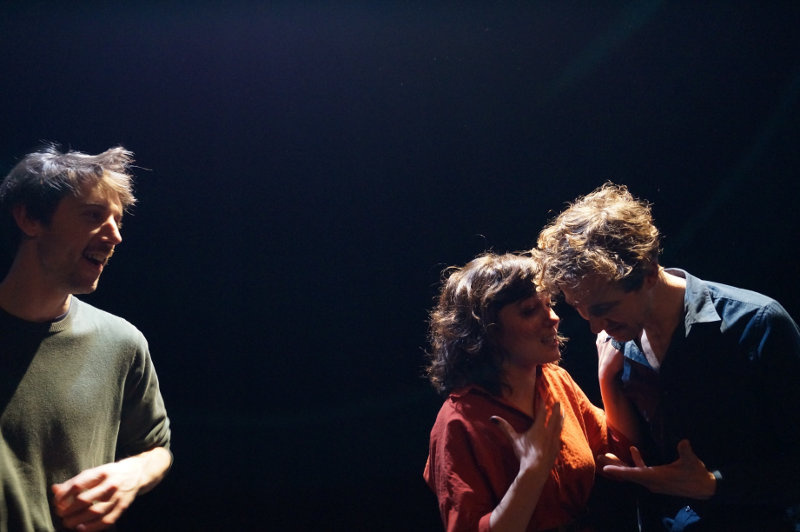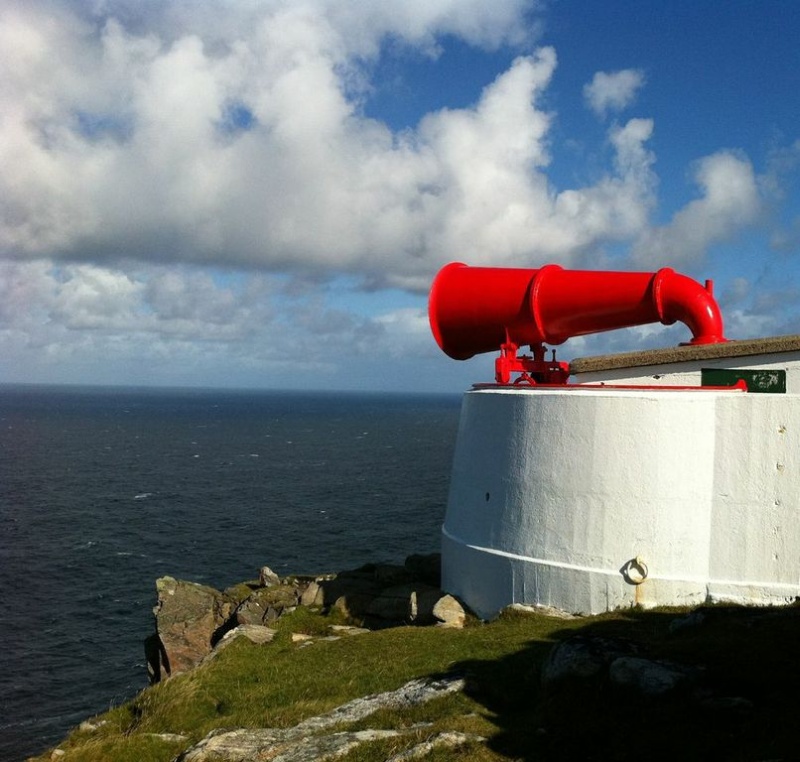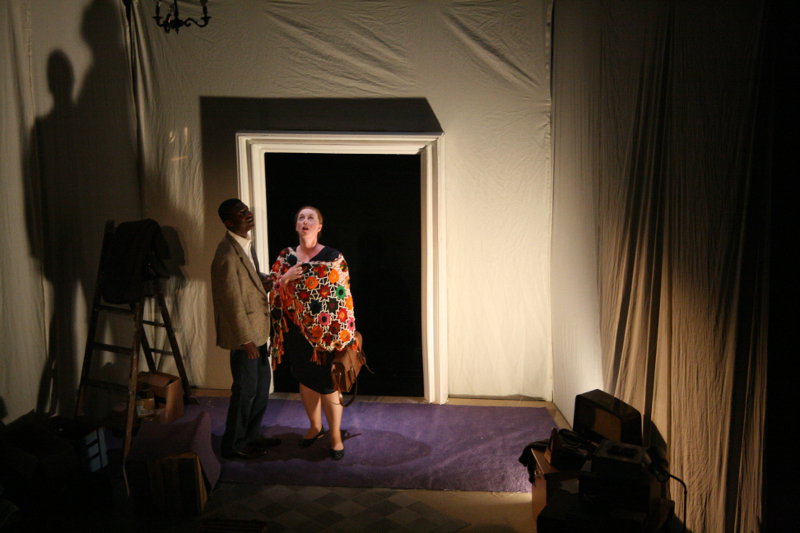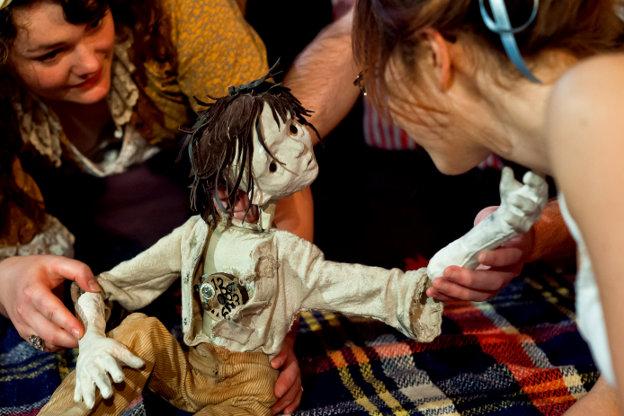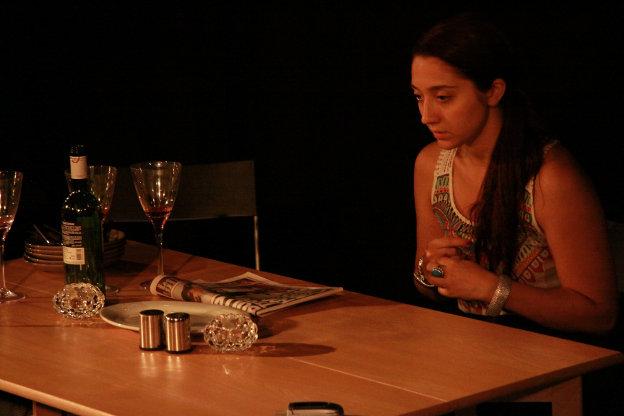This inventive and physical production from new collaborative company Move to Stand was stunning in its honest simplicity, multi-faceted characterisation and visual symbolism. The feeling of heart and substance in a story executed with focused professionalism made The Collision of Things a joy to experience. A simple set consisting of adult and child-sized plastic chairs, a water cooler, open white floor lanterns, and a laptop for sound effects gave the production a ‘back to roots’ fringe feel and belied the complexity of the subsequent multi-layered narratives, always delivered with engagement and clarity.
The production begins with a physical sequence featuring repetitive arm movements specific to each character but remaining cleverly in time – an indication of what is to follow as lives collide and merge before separating and changing for good.
We meet Jan and Luciana, a couple from Poland and Argentina respectively who are living in London, and see the enchanting story of their first meeting and growing relationship. Tom from Yorkshire is the prospective lodger, having come to London for the funeral of a father that he never knew and seeking to stay in order to get to know this world. His first viewing of the flat is an effective physical sequence, slickly executed. Tom is portrayed as a warm and engaging character, who is involved in much of the direct audience address. The bustle of the big city is well illustrated through movement of chairs to symbolise the tube and so on, and Tom’s naïve reaction to it is beautifully expressed.
Dramatic tension is subtly introduced, both between the seemingly happy couple harbouring secret longings – for a child and a more exciting life – and for Tom whose internal conflict centres on his alienation from his father and the strident wish to be remembered for having done something amazing in life. Such tension was effectively illustrated in particular moments: a rhythmic dance-like sequence represented the passions of the couple’s sex life, juxtaposed brilliantly with the boredom of supermarket shopping and a hilarious sequence where Jan dreams of escape in the vegetable stock aisle by becoming a bird. Tom too pushes himself to take risks in his new world; when finding out that his father liked to dance, he abandons himself lankily and hilariously to the music playing with a joy that is absorbing to watch, and his impetuous aim to jump into and swim in the Thames is hilariously realised as well. It is these layers and subtexts that make the show feel so well-rounded, with well-drawn characters whose journeys I really cared about, underscored by clever visual symbolism that brought the themes to life. The smaller chairs and a discarded baby’s shoe became signifiers of Luciana’s desperate need for a child, and the water dispenser was used to surprising effect.
That the performance ends in tragedy is mentioned in the promotional literature, but I won’t spoil the ending here! Suffice to say, through a literal and shocking collision, we see the characters able to begin mending some of the holes in their lives, and the narrative and strong performances kept me engaged until the very last moment.

